Best Novel Writing Courses [Become a Bestseller]Are you hoping to write a bestselling novel? If so, you need to learn the major storytelling elements that many bestselling books share. Fortunately, you can learn them online, in just a few days. Below, find my list of the best novel writing courses, with their prices. Whether you're a beginner author or an experienced writer looking to refine your skills, these online classes can help. Hit Writer Course for novelistsMy Hit Writer Course helps you turn your idea for a novel into a scene-by-scene outline, with a compelling plot and unforgettable characters, then provides guidance for writing the scenes, covering dialogue, description, and more. The online video lessons, which apply to any fiction genre, can be finished in just a day, or taken at any pace you'd like. You also get:
Get lifetime access for just $47. Novel writing topics covered in my courseHere are just some of the writing topics you'll learn: MasterClass novel writing coursesThough I teach my own classes, I also encourage you to learn from other writing instructors. MasterClass is a subscription-based, online-education platform I recommend. It offers lessons in various areas, from famous experts. A focus for MasterClass is its novel writing courses. How much does a MasterClass subscription cost?A MasterClass Individual membership costs $10/month, billed yearly. Once you sign up, you immediately gain access to all of its novel writing courses (plus all of its other classes). They offer a 30-day, money-back guarantee. I recommend you browse the MasterClass writing courses on their website. If just one of them seems like a fit for you, sign up for the 30-day trial, which you can take risk-free. List of MasterClass courses for novelistsJames Patterson
Judy Blume
R.L. Stine
Margaret Atwood
Dan Brown
Walter Mosley
Neil Gaiman
David Baldacci
Amy Tan
N.K. Jemisin
Udemy novel writing coursesAnother online-education platform I recommend is Udemy. They offer some great novel writing classes, plus courses in plenty of other subjects. How much does Udemy cost?Udemy courses are offered individually, each with its own price. Many of the writing classes range from about $50 to $150 bucks. You also have the option to get a subscription, which gives you access to 10,000+ courses. You can try it free for 7 days, then the price becomes $16.58/month. List of Udemy courses for novelistsWrite a Bestselling Novel in 15 Steps
Novel Writing Workshop
Your Path To Writing a Page-Turner
Your Writer's Journey: 12 Steps to Write Your Hero's Journey
Skillshare novel writing coursesAnother online-education platform I recommend is Skillshare. They offer various novel writing classes, plus courses in many other subjects. How much does Skillshare cost?Skillshare offers memberships. Once you sign up, you immediately gain access to all of the novel writing courses (plus all of the others). The first month is free. You can try it risk-free. Afterwards, it typically costs $14/month, billed annually, however, they're currently running a promotion for 30% off. Visit the deal page to claim their offer: List of Skillshare courses for novelistsNovel Writing for Beginners: How to Write Your First Draft
Nailing Your Narrative: Using Story Structure To Tell Irresistible Stories
How To Write A Book: Novel Writing
Write a Great Plot 101
Frequently asked questions about novel writing coursesHow can I learn to write a novel?Taking an online writing course can teach you the key elements of a novel. You should also read many books and start writing your own, even if you're not ready to publish anytime soon. The act of writing will help you develop your skills and style. Should I take a writing class before writing a book?Yes. First, learn the key elements of storytelling in a novel writing course. Without understanding them, you may spend months on a first draft that you find unworkable. Learn how to outline a story and structure a scene, then begin your novel, starting with an outline. Which genres are online writing courses for?Most online novel writing courses teach principles that apply to any fiction genre. Other classes cover these principles, while also going into writing advice specifically for one genre, or possibly a handful. If you write in any of the following genres, the courses listed in this article would be a help to you:
What's the difference between MasterClass and Skillshare?MasterClass has about 200 courses, taught by world-famous instructors. Though Skillshare's instructors tend to not be famous, the platform has over 30,000 classes, covering many narrow topics. To learn more, check out my article on Skillshare vs. MasterClass. What's the difference between Skillshare and Udemy?Skillshare and Udemy each offer a subscription option, with access to unlimited classes. A Skillshare subscription costs less than a Udemy one, about $10 per month vs. about $17. However, Udemy has more courses, over 200,000, plus lets you purchase any individually, without a subscription. To learn more, have a look at my post on Skillshare vs. Udemy. Is it worth taking a writing course?Yes. Online writing courses are a very affordable way to learn key storytelling elements. They are much cheaper than college creative writing classes. The small amount of money you'd spend on a course can be earned back very quickly in sales royalties from a book. This post contains affiliate links.
0 Comments
MasterClass for Writing - Should You Try it? [Courses and Reviews]Are you hoping to write a hit book or screenplay? The writing courses on MasterClass can help. Learn writing techniques online, with self-paced video lessons from famous authors and screenwriters. In this article, I provide reviews of recommended MasterClass courses on book and screenplay writing from various instructors. What is MasterClass?MasterClass is an online-education platform that features video courses taught by accomplished people in various fields. Subscribers to MasterClass gain access to all courses on the platform. One of the areas MasterClass covers is writing. Since I'm a fiction writer, in this article, I focus on classes pertaining to books and scripts, however, MasterClass provides narrative writing courses in poetry and journalism too. You can view all of the MasterClass writing courses on its website: Who are MasterClass writing courses for?MasterClass courses were designed with new writers in mind. You should be able to understand the material even if you haven't tried writing a book or screenplay yet. Experienced authors or screenwriters may already be familiar with various topics covered, however, can surely pick up new tips. Certain classes revolve around book writing and others screenwriting. However, most of the underlying concepts the instructors speak about apply to both formats. Some courses go into detail on specific genres - ex, thrillers - however, most of the underlying concepts apply to various genres across narrative writing. If you are an author or screenwriter in any genre - or would like to be someday - all of the classes listed in this article should benefit you in some way. Here's a look at the major topics the courses cover... MasterClass writing topicsMany lessons are aimed at helping writers create an outline for their story. Example topics: Lessons also cover the writing stage after an outline is completed and a writer has moved on to creating scenes. Example topics: Finally, various lessons go over elements of a writing career that aren't directly related to what's written on a page. Example topics:
How much does MasterClass cost?A MasterClass Individual membership costs $10/month, billed annually. Subscribers receive instant access to all courses on the platform, which they can view on one device (ie, computer, tablet, phone, or TV). For $15/month, billed annually, you can access all course content on two devices, known as the Duo membership. The Family membership - which costs $20/month billed annually - lets you access content on six devices. All three plans have a 30-day guarantee. If you aren't certain the platform is a fit for you, I encourage you to sign up and try it. If you'd rather not remain a member, you can easily cancel your subscription for a full refund. MasterClass writing courses and reviewsBelow are overviews and links to MasterClass writing courses I recommend. I looked into classes in areas related to what I write. I am sure many other classes on MasterClass are helpful too. Just because a class isn't on this list, does not mean you should skip it. Possibly you write in an area much different than me (ex, children's books) and other classes may be of interest to you. Once you subscribe to MasterClass, I suggest you browse all the writing classes and take as many as possible with material relevant to you. My list of recommended classes, with reviews... James Patterson MasterClass reviewJames Patterson is the bestselling novelist of thriller series such as Alex Cross and Women's Murder Club. His MasterClass features 22 video lessons, covering topics like:
I recommend this class to anyone interested in writing fast-paced fiction, particularly in the mystery and thriller genres. Though James Patterson is an author, the class would also be helpful for screenwriters. To take the James Patterson MasterClass, just register on the website and you can start immediately: David Baldacci MasterClass reviewDavid Baldacci is the bestselling author of various thriller series. In his MasterClass, you can take 18 video lessons on topics like:
I recommend this class to anyone interested in writing page-turning fiction, especially in the mystery and thriller genres. Though David Baldacci is a novelist, the lessons would apply to screenwriters too. To take the David Baldacci MasterClass, just sign up on the website and you can begin immediately: Malcolm Gladwell MasterClass reviewMalcolm Gladwell is the bestselling author of non-fiction books such as The Tipping Point and Blink. Since Malcolm Gladwell writes in a narrative style, I've included his course on this list, even though his books aren't fiction. He teaches 24 video lessons, on topics like:
I recommend this course to anyone interested in writing narrative non-fiction, or fiction, whether articles, short stories, or books. Screenwriters and documentary filmmakers could benefit from these lessons too. To take the Malcolm Gladwell MasterClass, just register on the website and you can start right away: Aaron Sorkin MasterClass reviewAaron Sorkin is the acclaimed writer of The Social Network, The West Wing, and other films and television shows. His class offers 35 video lessons, on topics such as:
I recommend this course to anyone interested in writing screenplays, teleplays, plays, or novels. To take the Aaron Sorkin MasterClass, just sign up on the MasterClass website and you can start instantly: Neil Gaiman MasterClass reviewNeil Gaiman is a popular writer of short stories, novels, graphic novels, and more. His MasterClass features 19 video lessons, on topics like:
I recommend this course to anyone interested in writing novels, short stories, screenplays, graphic novels, or comic books. Though the class may be particularly helpful to fantasy writers, any fiction writer could benefit from it. To take the Neil Gaiman MasterClass, just sign up on the website and you can begin immediately: Dan Brown MasterClass reviewDan Brown is the bestselling author of The Da Vinci Code and other thriller novels. His course offers 19 video lessons, on topics such as:
I recommend this class to anyone interested in writing mysteries and thrillers, whether in novel or screenplay form. The class could also be helpful to writers in other genres who are hoping to incorporate suspense into their stories. To take the Dan Brown MasterClass, just register on the website and you can start instantly: David Mamet MasterClass reviewDavid Mamet is the acclaimed writer of plays, such as Glengarry Glen Ross and American Buffalo, screenplays, and more. His class features 26 video lessons, on topics like:
I recommend this class to anyone interested in writing screenplays, plays, or novels. To take the David Mamet MasterClass, just sign up on the MasterClass website and you can begin immediately: More recommended MasterClass courses for writersThe MasterClass courses listed above are designed for writers. Some other courses are designed for directors, however, address storytelling concepts a writer could find helpful. Below, I've provided a brief bio of these instructors and links to learn more about their classes: David Lynch is the acclaimed screenwriter and director of the films Mulholland Drive, Blue Velvet, and more. To learn more about the David Lynch MasterClass, visit the course page. Martin Scorsese is the Oscar-winning director of Goodfellas, The Wolf of Wall Street, and other films. To learn more about the Martin Scorsese MasterClass, visit the course page. Judd Apatow is the popular screenwriter and director of the films Knocked Up, The 40-Year-Old Virgin, and more. To learn more about the Judd Apatow MasterClass, visit the course page. Ron Howard is the Oscar-winning director of A Beautiful Mind, Backdraft, and other movies. To learn more about the Ron Howard MasterClass, visit the course page. James Cameron is the Oscar-winning screenwriter and director of The Terminator, Aliens, and other films. To learn more about the James Cameron MasterClass, visit the course page. Try MasterClass freeDo any of the MasterClass courses mentioned in this article seem like they could help you? If so, I suggest you sign up for MasterClass and start watching the lessons. You have a 30-day money-back guarantee. If the platform isn't right for you, easily cancel without losing a dime. To begin your MasterClass free trial, just visit the website and select "Sign Up": To learn more about MasterClass, check out my post on how it compares to Skillshare. This post contains affiliate links. Use These 10 Literary Devices to Tell an Awesome StoryIf you're writing a book, screenplay, or short story, you want to captivate your audience with your characters and settings, build suspense, and deliver strong emotional payoffs. Literary devices are tools that can help. Though plenty of literary devices exist, these 10 are particularly useful in fiction and narrative non-fiction. Check out these examples and tips for using them to tell an awesome story. Want to write an awesome story? Download my FREE outlining guide. What is a literary device?A literary device is a technique writers can use to make stories more engaging. These tactics can create suspense, evoke emotion, set up a plot twist, and more. Alliteration, symbolism, and foreshadowing are examples of literary devices. 10 literary devices for your storyBelow are definitions of 10 powerful literary devices for your book, screenplay, or short story. Click the "Learn More" links to see examples of each literary device and tips for applying it to your story. #1 - SymbolismSymbolism is when an element of your story - like a character, setting, or object - represents an idea. The represented idea tends to play a significant role in the story's character development, plot, or theme. For instance, in a prison story, grass might be a symbol for freedom. Learn More #2 - ToneTone is the attitude a writer takes toward the events in a story. Though characters may have distinct attitudes, the literary device tone just refers to the attitude of the writer. Some examples of tone are optimistic, comedic, and regretful. Learn More #3 - MoodMood is the overall feeling of a scene. Chaotic, warm, and sad are examples of moods. One story can have many moods, since different scenes can create different emotional responses from an audience. Learn More #4 - ImageryImagery is a literary device writers use to connect with any of the audience's five senses: sight, sound, smell, touch, and taste. Imagery is often used in the descriptions of characters, settings, and plot events. Learn More #5 - MetaphorA metaphor falsely asserts that one thing is another while creating a true, symbolic comparison. "The office is an igloo" is an example of a metaphor. Learn More #6 - PersonificationPersonification is the granting of human qualities to non-human elements in a story, like vehicles, houses, and even concepts, such as hope or doubt. Learn More #7 - ForeshadowingForeshadowing is a literary device writers use to allude to future events in a story. Two kinds exist: (1) Direct foreshadowing states a story event is to come (2) Indirect foreshadowing gives evidence of an event the audience does not anticipate. Learn More #8 - Dramatic ironyDramatic irony is a literary device in which a writer gives information to the audience that a character, or multiple characters, is unaware of. The tactic can build suspense. Learn More #9 - MotifA motif is a repeating element in a story that plays a strong role in the story's theme. Motifs can be abstract ideas, like triumph or deceit. They can also be parts of your story's physical world, such as buildings, objects, colors, and noises. Learn More #10 - AlliterationAlliteration is the repetition of a consonant sound at the start of two or more close-together words, as in "warm weather," with "w" the repeating sound. Learn More Why use literary devices?Here are just some storytelling components literary devices can help you with:
What genres use literary devices?Literary devices are used across fiction and narrative non-fiction. Some examples of genres that use literary devices:
How to use literary devicesLiterary devices should serve the story you're telling. Once you have an idea of your characters and your plot, and you begin writing your first draft, you'll need to accomplish various tasks to make any scene work. For instance, let's say your main character in a thriller is running from three gunmen in a scene. For this scene to work, a task of yours could be making the audience fear for your protagonist's life. A combination of literary devices can be applied to accomplish that task. You can use dramatic irony to make your protagonist unaware of the danger lurking around the corner. Once the protagonist sees the gunmen, you can leverage mood to create a feeling of desperation. You can also apply imagery to show the physical effects of panic, like sweat and an accelerating heartbeat. Think of literary devices like specialized tools. Let your story tasks dictate when and how you apply these tools. What to avoid when using literary devicesAs stated, the writing tasks you need to accomplish to make a scene work should determine what literary devices you use - avoid the opposite approach, ie, deciding you want to use a certain literary device and then bending the purpose of a scene just so the device can fit. You also want to avoid literary devices drawing attention to themselves. They should help your scenes flow, not cause the audience to focus on the device. Certain devices, like alliteration, can draw attention to themselves if used too often. Other devices, like tone, can draw attention to themselves if shifted through a story. Once you gain a deeper understanding of the 10 literary devices outlined above (with the "Learn More" links), you should have a good idea of how to apply them to your story in a natural way. Unlock the Power of Dramatic Irony for a Captivating StoryIf you're writing a book, screenplay, or short story, you want to infuse it with as much suspense as possible. Dramatic irony is a powerful writing tool you can use to build suspense. In this article, I'll give you the definition of dramatic irony, provide examples, and offer tips for applying it to your story. Want to write an awesome story? Download my FREE outlining guide. What is dramatic irony?Dramatic irony is a literary device in which a writer reveals information to the audience that one or more characters in the story don't know. The technique is used to build suspense. How to build suspense with dramatic ironySuspense occurs when a writer holds off on revealing information the audience cares about. In general, the more the audience cares about the information, and the longer the audience waits for the answer, the greater the feeling of suspense. The audience's level of interest in a piece of information relates to how emotionally invested they are to the character(s) the information affects. For example, if you've developed a great lead character the audience connects with, and then put that character in a dangerous situation, the audience should worry about the outcome of that situation: Will the protagonist make it out alive? As the audience waits to see how the situation plays out, a strong sense of suspense will develop. To create suspense with the dramatic irony writing technique, follow these steps:
Since the character doesn't even know about the explosive situation he's in, he doesn't do anything to help himself. This idea of helplessness makes a negative outcome seem more likely, and drives up the tension. How POV relates to dramatic ironyDramatic irony is rooted in information imbalance - your audience knows something certain character(s) don't. The POV you tell your story from will limit the level of information your audience can know that specific characters don't. For instance, if you're telling a story from a first-person POV, with your main character as the subject of every scene, your audience wouldn't be able to know anything your lead character doesn't. Since the protagonist is directly telling the story, whatever the audience learns would come from him. Thus, with first-person POV, you wouldn't be able to apply dramatic irony to any predicaments your main character is in. However, if you went with a third-person POV, you would have the option to put your protagonist into a dynamic with dramatic irony. With a third-person POV, your main character does not need to be in every scene. You can show a dangerous situation developing in a place your main character is not yet in, then have the lead character arrive a few scenes later. If you plan to create suspense via dramatic irony, be mindful of selecting a POV for your story that permits the intended information imbalances. Examples of dramatic ironyLet's look at examples of dramatic irony across three popular genres: thriller, romance, and comedy. Dramatic irony in a thrillerScene A Wesley, the villain, gets on a train. Its number, 208, is stamped on the front. He hides a bomb in a luggage compartment. No passengers or staff notice. The bomb is set to go off at 8 AM, in thirty-two minutes. Wesley gets off at the next stop. Scene B Ryan, the protagonist, is waiting at a train station for his daily commute to the office. A train with "208" on the front stops at the station and Ryan gets on. He calmly reads emails on his phone. The time is 7:45 AM. He writes an email. The time is now 7:54 AM. Dramatic irony in a romanceScene A Lydia, the main character, is getting ready for a date with a man named Paul, at a restaurant called Avery Cafe. This date would be her first since her bad breakup with Charles, who cheated on her with her former best friend. Scene B Charles and Lydia's former best friend pull up to a valet in his car. Holding hands, they walk inside a restaurant, an "Avery Cafe" sign out front. Inside, they're seated at a table. Paul is seated at a nearby table for two. The seat across from his is still empty. He's never met Charles or Lydia's ex-best friend, so doesn't recognize them. Paul seems to notice his guest walk in. He stands and waves. Dramatic irony in a comedyScene A Hal, the protagonist, receives a call from his boss to join him at a prospect's house to demo the new product Hal invented. Hal, excited, says he'll be right there. As a child, Hal was attacked by a flock of birds and wet his pants. Now an adult, he has a psychological complex about the incident - if he's too close to a bird, he risks wetting his pants. Embarrassed, he has never told anyone about this except his therapist. Scene B Hal's boss is inside a mansion with an eccentric businessman. The businessman has over a dozen exotic pets. One is a large bird, perched on his shoulder. Hal's boss tells the prospect that Hal should be here in five minutes. Dramatic irony's inverseTo keep your scenes fresh, you shouldn't just rely on dramatic irony to create suspense. Its inverse is a very effective tool as well: A character knows something the audience doesn't. Give a character the answer to a question the audience wants to know, however, don't reveal the answer right away, building suspense. For example, Jen goes into her parents' attic. She screams. The scene ends. In the subsequent scene, she is shocked and nervous. She clearly saw something in the attic that petrified her, however, the audience has not been told what. She keeps the sight a secret through most of the story, not telling her parents or anyone else about it. Want more writing advice?Creating an Immersive Mood in Your Story: Examples and TipsIf you're writing a book, screenplay, or short story, you want to create an immersive experience for your reader. You want to pull the audience into your scenes and deliver strong emotional payoffs. Mood is a powerful literary device than can help you do that. In this article, I tell you what a mood in storytelling is, provide examples, and offer tips. Want to write an awesome story? Download my FREE outlining guide. What is mood in writing?Mood in writing is the overall feeling of a scene. Exciting, lighthearted, and somber are examples of moods. A story can have multiple moods, as different scenes can evoke different emotional responses from the audience. The importance of mood in storytellingThe four key elements of a story are character, plot, theme, and emotional impact. Since mood is based on feeling, it's a great tool for enhancing the emotional impact of your story. Each scene should have a distinct mood that's tied into its central conflict. Is your main character running from a serial killer? Fear would be a natural mood for that scene. If you can play up the feeling of fear, you can evoke a strong emotional reaction from your audience. Pulses will go up as they turn the pages. On the other hand, if the mood you're creating doesn't fit with the central conflict of your scene, you can ruin what might be an otherwise great scene. For example, let's say you're writing a scene where the main character just finds out his sister is missing. A mood of anxiety would be a natural fit. However, if you instead gave the scene a detached feel, where the main character doesn't care much, the audience wouldn't care much either. It would feel flat. How mood relates to tone and genre in writingTone is another literary tactic. It refers to the attitude a writer takes toward the events in a story. Unlike mood, which can show up in a different form in various scenes, a story should have just one tone. Examples of tone would be sarcastic, serious, or nostalgic. The tone you choose for your story narrows the moods you can pull off in it. For example, if your story has a sarcastic tone, a somber scene may be difficult to make workable. If, instead, your story had a serious tone, a somber scene would be a natural fit. The genre you write in shouldn't necessarily limit the mood of any scene, however, in totality, the moods of your scenes should align with audience expectations for your genre. For example, if you're writing a horror story, you absolutely can have a scene with a funny mood. Possibly, toward the beginning of the story, before the killer is loose, you can characterize your protagonist by showing her joking around with her friends. However, if your story goes to have 50 scenes total, and 40 of them wind up having a funny mood, your story won't feel like a horror one. Horror readers expect moods like fear, worry, and excitement in the majority of their scenes. Thus, be mindful of mood expectations in your genre. Feel free to go in different directions, but only in small doses. How to create a mood in storytellingThe characters in your scene are the conduits for creating a mood for your audience. What the characters feel directly impacts what your audience feels. Thus, to create a mood, you want to capture the emotional state of your characters. Here are three tips: #1 Create mood with dialogueDialogue is what your characters say to each other. How the characters feel should be reflected in how they talk (even if they're lying, ie subtext). For instance, let's say one character in a scene is training another for a boxing match. While the trainer yells at the boxer, the dialogue would create a mood of intensity. Or maybe you have a scene where one character is warning others about a terrible storm blowing into town. As the characters worry about the storm, an overall mood of worry will emerge. #2 Create mood with settingWith an effective setting, you can create a mood without your characters even speaking. Let's say you're writing a sci-fi story. Your protagonist, who's from Earth, winds up traveling to a different planet. This planet is technologically about 10,000 years ahead of Earth. When your character first arrives and marvels at all the high-tech infrastructure, a mood of awe will be produced. Your character doesn't need to say she's in awe. The setting alone will get the point across. #3 Create mood with plot eventsPlot events should unfold in a cause-and-effect way, with scenes building off one another. Thus, if your main character appears in scene C, the audience may already have a good idea of what's at stake because of previous scenes A and B. For instance, let's say your protagonist, from Nebraska, has been practicing for a singing competition in Los Angeles. If a scene opens with a plane landing in Los Angeles, a feeling of anticipation would be created. Based on past events, the audience knows the high stakes of the LA trip. Though scenes should follow a cause-and-effect flow, they absolutely can be filled with surprises. A surprise is an abrupt plot event that characters did not see coming. Surprise has the ability to create a strong mood in an instant. For instance, let's say you're writing a scene where two couples are enjoying a beach vacation. The scene has a lighthearted mood. Then, a woman discovers a dead body behind a bush. The mood of the next scene immediately becomes panic. The simple reveal of a dead body is all that was needed to produce this strong mood. Build on the mood you createIf you're able to create a distinct mood for a scene, you're off to a good start. Next, you want to build on this mood, ratcheting up its emotional force. Let's go back to the example of a character running from a serial killer. We've established a mood of fear. How can we escalate the feeling of fear? Here's a possible sequence of events that could accomplish this:
What genres use mood?Mood is used across fiction and narrative non-fiction. Some examples of genres that use mood:
Want even more writing tips? |
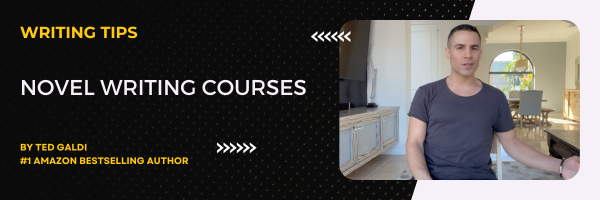

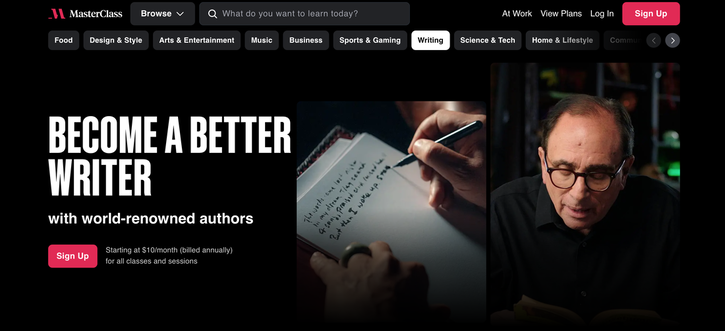
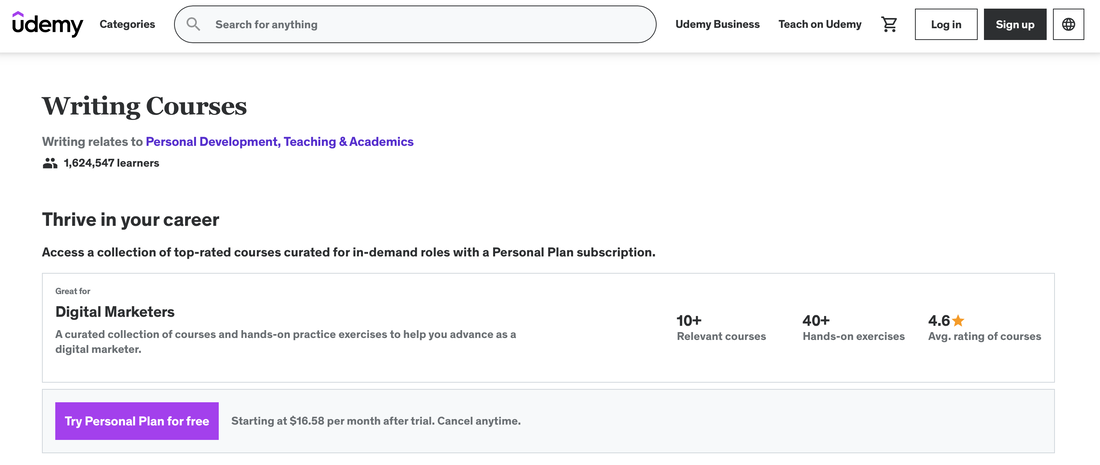
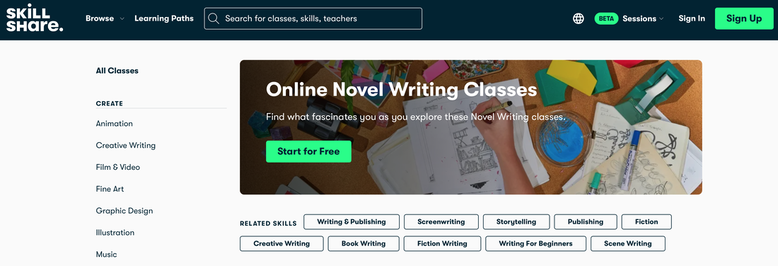
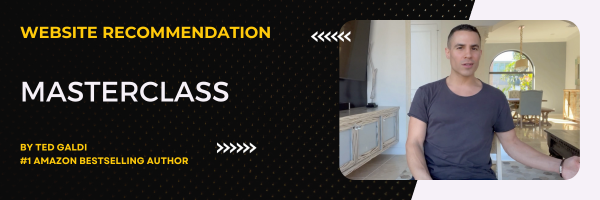

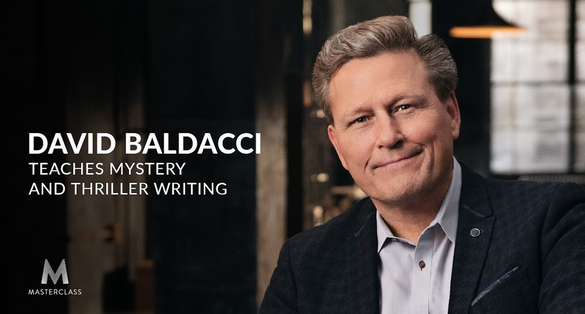


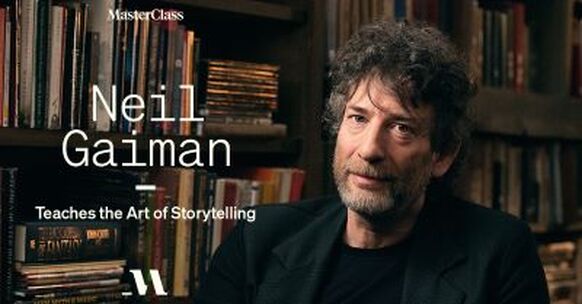


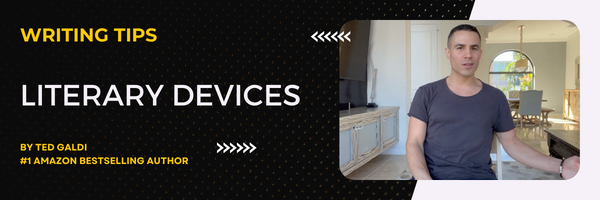
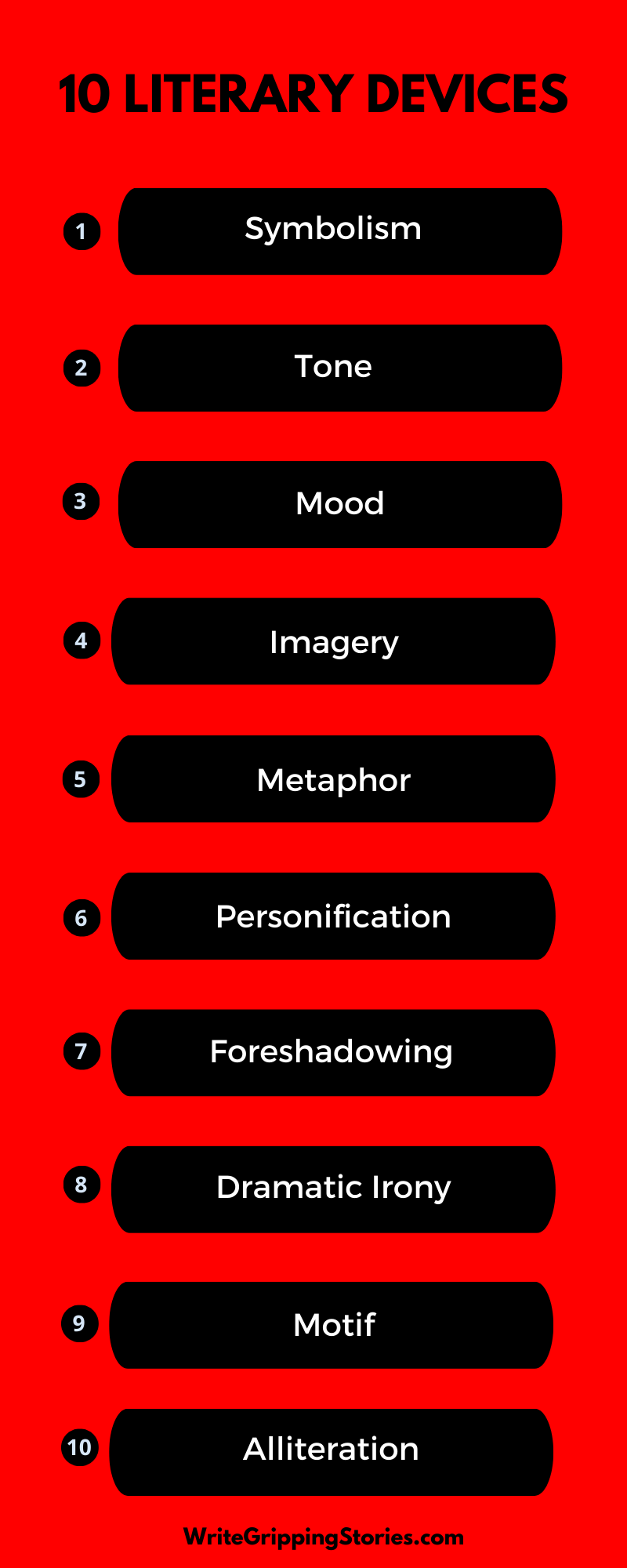
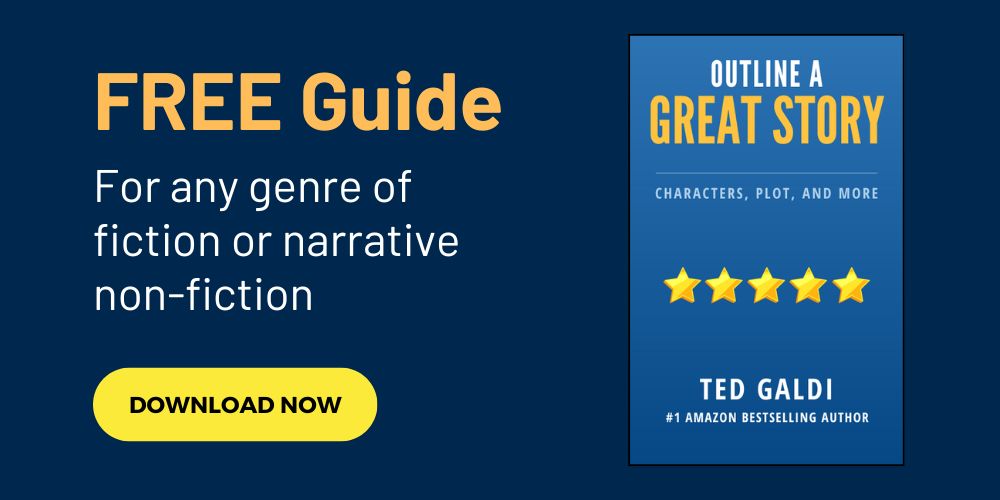
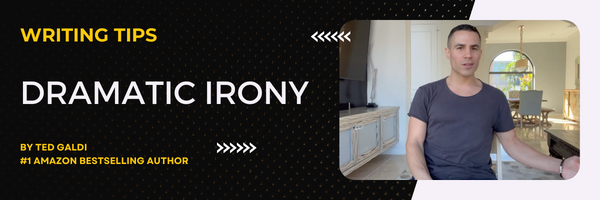
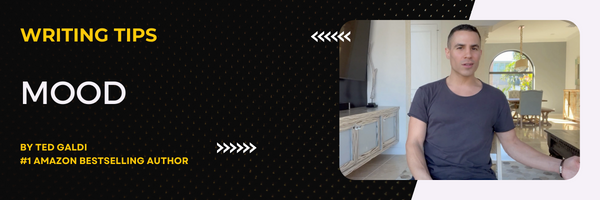
 RSS Feed
RSS Feed